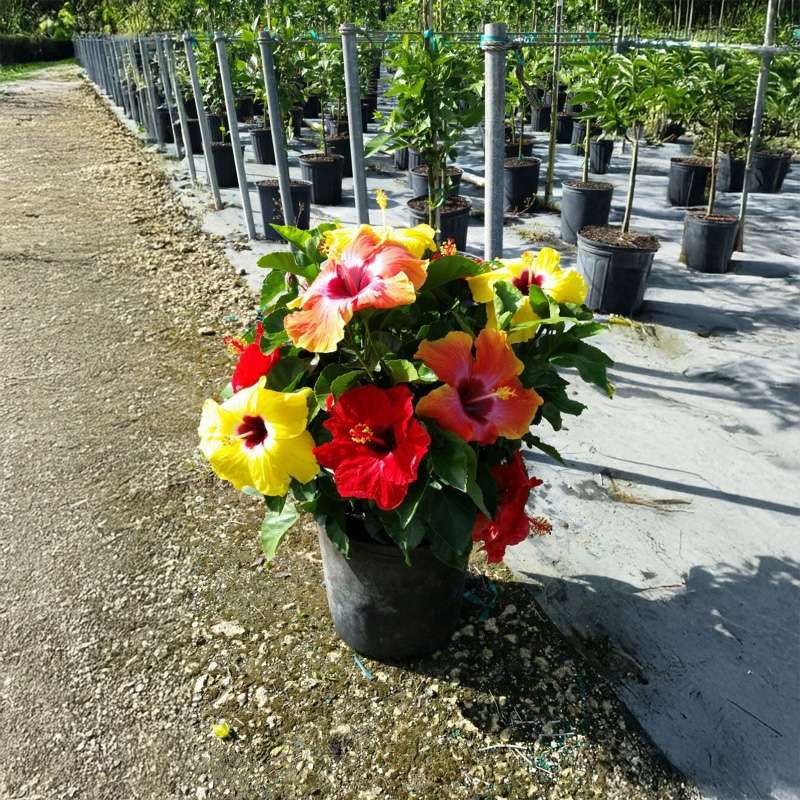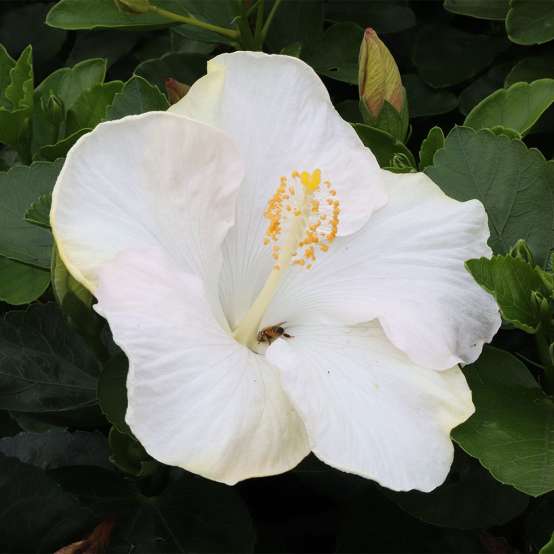Clicking the following controls will change the main image displayed above.

Meet the Breeder
Jim Berry
Grand Saline, TX
HOLLYWOOD HIBISCUS® BLOOM BASH®

Tropical Hibiscus
Hibiscus Rosa-sinensis


- Long blooming
- Heat tolerant
- Description
Three warm colors come together on one fabulous plant! Hollywood Hibiscus® Bloom Bash® features large red, yellow, and orange blooms all summer long. It bears big, satellite dish-shaped blooms all season long. The flowers of Hollywood Hibiscus last three days instead of the usual one, giving you way more color with much less work.
As tropical hibiscus, Hollywood Hibiscus cannot tolerate cold temperatures. However, they make excellent plants for summer color in cold areas and are easy to grow in containers. Their big, colorful flowers also attract hummingbirds. If you live in a cold climate and wish to bring your Hollywood Hibiscus indoors for winter, keep it in a cool, bright spot, and avoid both under and overwatering. The plant is likely to respond to its move indoors by dropping several leaves and ceasing flowering. However, once the weather warms back up and your Hollywood Hibiscus can go outdoors again, it will quickly recover and get back to being lush and full of blooms.
*Hollywood Hibiscus liners and finished plants are available through the network of licensed growers.
- USDA Zone
- 9 - 11 (20°F/-7°C)
- Exposure
- Full sun
- Height
- 5'
- Width
- 4'
- Type
- Deciduous
- Bloom Time
- Spring through fall
- Flower Color
- Orange, Red, Yellow
- Foliage Color
- Green
General Care
Soil
Adaptable to most well-drained soilPruning
Late winter/early springUses
Containers, borders, specimen, foundationsGrowing Tips
For best flowering, especially in areas where you are growing Hollywood Hibiscus as a patio plant, fertilize regularly with a balanced fertilizer. “Bloom booster” and any fertilizers that contain high amounts of phosphorous (P, or the middle number in a fertilizer analysis) should be avoided. Excess phosphorous is harmful to tropical hibiscus, and will result in yellowing leaves and stunted, unattractive growth.Features: Heat tolerant
Filters: Botanical genus: Hibiscus, Common name: Tropical Hibiscus, Retail program: Proven Winners® ColorChoice®, USDA Zone 9, USDA Zone 10, USDA Zone 11, Exposure: Full sun, Bloom time: Spring, Bloom time: Summer, Bloom time: Fall, Orange flowers, Red flowers, Yellow flowers, Green foliage
Features: Heat tolerant
Filters: Botanical genus: Hibiscus, Common name: Tropical Hibiscus, Retail program: Proven Winners® ColorChoice®, USDA Zone 9, USDA Zone 10, USDA Zone 11, Exposure: Full sun, Bloom time: Spring, Bloom time: Summer, Bloom time: Fall, Orange flowers, Red flowers, Yellow flowers, Green foliage








